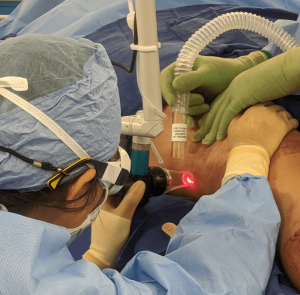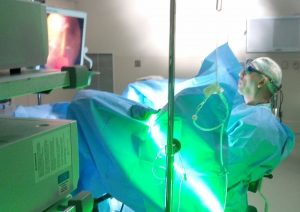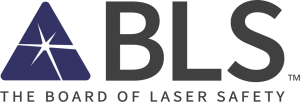By, Deirdre H. Elder, DABHP, CMLSO
Who uses medical lasers in your institution? How do you know the provider is qualified? These are questions that should be asked in every medical facility that uses Class 3B and Class 4 lasers.
The Challenge
There is currently a lot of variation in the specificity of laser privileges and the requirements for them to be granted, even within an institution. In a non-scientific survey conducted by the author, twelve academic medical centers, six community hospitals and one military hospital responded to questions regarding the laser privileging process. Three of the nineteen facilities grant core privileges for “use of lasers” or “laser surgery” to all physicians within a specialty. Four facilities have privileges based on the laser type and wavelength [e.g. CO2 laser (10,600 nm) or Nd:YAG laser (1064 nm)]. Three have very specific privileges that indicate the type of laser and the procedure for which it can be used. For example, Ophthalmology may have privileges for Nd:YAG laser capsulotomy and ArF Excimer photorefractive keratectomy, while Cardiology may have a privilege for XeCl Excimer laser atherectomy. Nine of the facilities had a mixture of laser privileges that differed by specialty.
There is also variation in the requirements for physicians to be granted a laser privilege. Only 63% of the facilities required providers to complete laser safety training and 68% required documentation of training and experience.
Once laser privileges are granted initially, 53% automatically grant them at each reappointment. Only 47% require documentation of a minimum number of cases with each laser, with good outcomes, to renew the privileges.

Standards, Guidelines and Regulations
What is the best process to ensure patient safety and to protect the provider and facility? Let’s begin with a review of the requirements in the American National Standard for Safe Use of Lasers in Health Care (ANSI Z136.3-2018). In section 5.2.1, laser safety training is required for health care personnel including laser users and laser operators and 5.2.2 indicates, “Retraining programs should be provided […] not less frequently than every five years for laser users, laser operators” and other personnel. Section 5.2.3 states that “All certification and credentialing processes at the facility […] shall require training in the safe use of lasers, as well as the maintenance of a safe environment […].”
The Association of periOperative Registered Nurses (AORN) also provides guidance regarding the safe use of surgical lasers. AORN indicates that the laser safety committee responsibilities should include “establishing requirements for credentialing” and “verifying that any physician who operates a laser has completed the health care organization’s required education on the operation and safety precautions and course work in basic laser physics, laser-tissue interaction, and clinical applications for the specific laser for which privileges are sought.” (AORN 2017)
The Joint Commission (TJC) defines credentialing as “the collection, verification, and assessment of information regarding three critical parameters; current licensure; education and relevant training; and experience, ability, and current competence to perform the requested privilege(s).” TJC indicates that “core/bundled privileges must clearly and accurately define the specific activities/procedures/privileges to be included the core/bundle and reflect only activities/procedures/privileges performed at the organization from which privileges have been requested.” The Centers for Medicare & Medicaid Services (CMS) requires that “the hospital’s Governing Body must ensure that all practitioners who provide a medical level of care and/or conduct surgical procedures in the hospital are individually evaluated by its Medical Staff and that those practitioners possess current qualifications and demonstrated competencies for the privileges granted.”

Recommendations
To comply with ANSI Z136.3-2018, AORN guidelines, TJC standards, and CMS regulations, healthcare facilities need to ensure that providers who use lasers have documented training and experience with the lasers they will use before granting laser privileges. Privileges should be specific to the laser(s) to be used, and the facility needs to have a process for ensuring retraining in laser safety at intervals not to exceed 5 years and evaluation of continued competency.
Ideally, provider privileges would be very specific as to the laser used and the procedure that is performed with the laser (e.g. Nd:YAG laser capsulotomy or Ho:YAG laser lithotripsy). However, the list of specific laser privileges could be quite long. For this reason, many facilities grant privileges for procedures and laser use separately. Physicians may have core privileges to perform typical procedures and then special privileges for the use of specific laser(s). At my facility, providers can request privileges from a list that includes 13 different lasers from the ArF Excimer laser with a wavelength of 193 nm to the CO2 laser with a wavelength of 10,600 nm. There are separate privileges for each wavelength of diode laser.
Physicians should be required to submit documentation of training and experience with each laser for which privileges are requested. The facilities in which I work require 2 cases during the previous two years, but some facilities require up to 5 cases and/or allow up to 5 years.
Training in laser safety and maintaining a safe environment should be required at initial credentialing and periodically. While ANSI Z136.3 allows up to 5 years, our credentialing committee decided to require retraining at each reappointment (every 2 years) to renew laser privileges. We have four different laser safety training modules available through our computer-based learning system so providers complete training that is relevant to the setting in which they work and the types of lasers they are likely to use.
If your facility currently has very generic laser privileges and/or does not require any documentation of training and experience, I recommend that you start a conversation with physicians who use lasers, medical credentialing staff and facility administration to discuss the gaps in the current program and best practices that can be implemented. I recruited physician champions and worked with them and medical staff office personnel to develop the policy for laser privileges. We then presented it to the credentials committee and then the medical board.
References
American National Standards Institute (2018). American National Standard for Safe Use of Lasers in Health Care Z136.3-2018. Laser Institute of America. Orlando, FL
American Society for Laser Medicine and Surgery (2012). Standards Of Training For Physicians For The Use Of Lasers In Medicine And Surgery. Available at https://www.aslms.org/for-professionals/professional-resources/standards-of-practice/standards-of-training-for-physicians-for-the-use-of-lasers-in-medicine-and-surgery
Association of PeriOperative Registered Nurses (2016). Guideline Summary: Energy Generating Devices, Part 2 – Lasers. AORN Journal (105) 4, (pp. 402-406)
Centers for Medicare & Medicaid Services (2004). Centers for Medicare & Medicaid Services (CMS) Requirements for Hospital Medical Staff Privileging. Ref: S&C-05-04. Available at https://www.cms.gov/Medicare/Provider-Enrollment-and-Certification/SurveyCertificationGenInfo/Downloads/SCletter05-04.pdf
The Joint Commission (2020). Standards FAQs: Privileging Process – Core or Bundled Privileging Model. Available at https://www.jointcommission.org/standards/standard-faqs/hospital-and-hospital-clinics/medical-staff-ms/000001472/
About the Author
Deirdre Elder is a Certified Health Physicist and Certified Medical Laser Safety Officer with twelve years of experience. She is the Radiation Safety Manager for UCHealth and serves as the Radiation Safety Officer and Laser Safety Officer for University of Colorado Hospital and other facilities within the system.
–
Source: https://issuu.com/marketlia/docs/lia_today_julaug_2020/15?fr=sOTVjMDE4NzIxMzA







